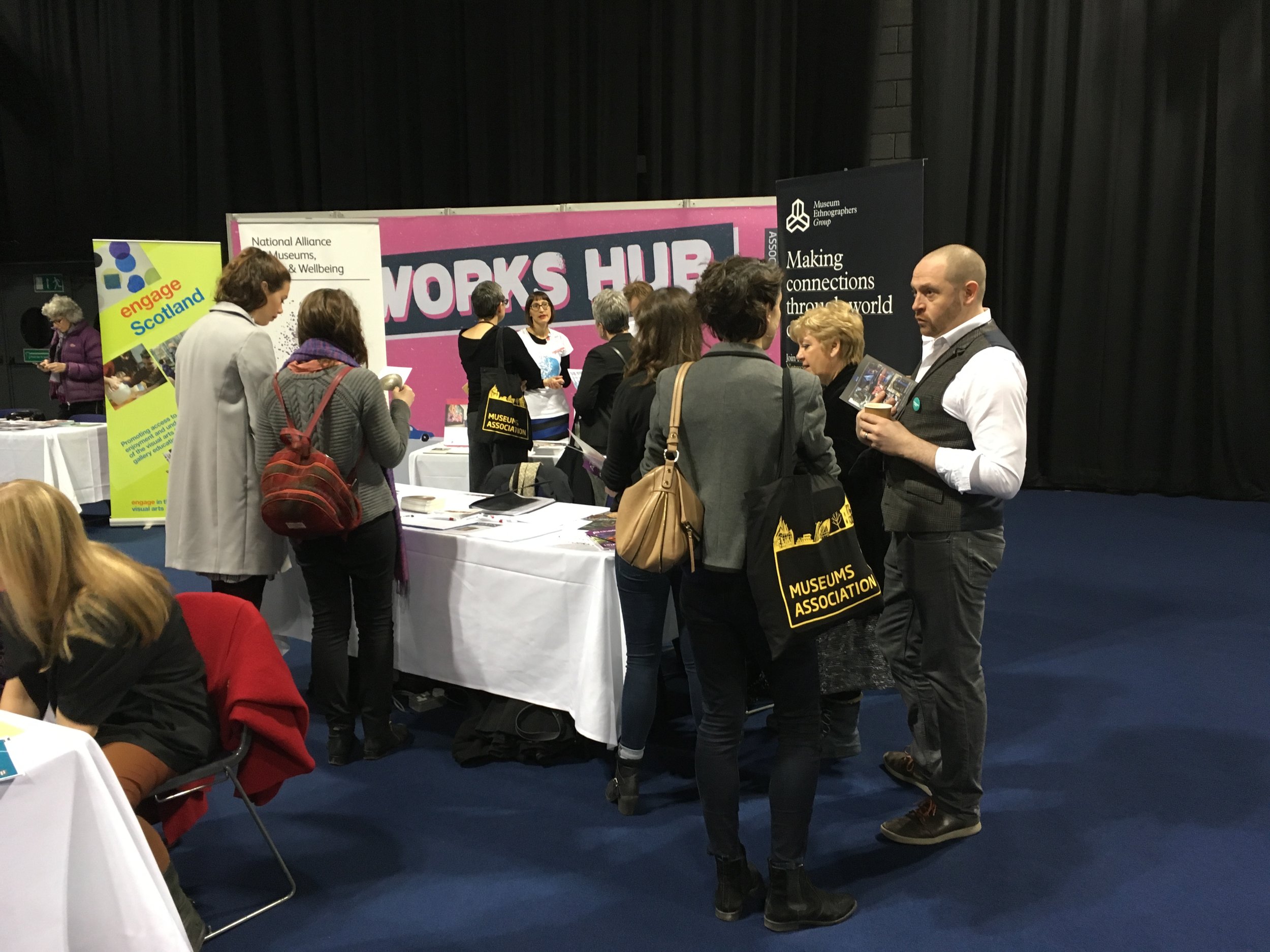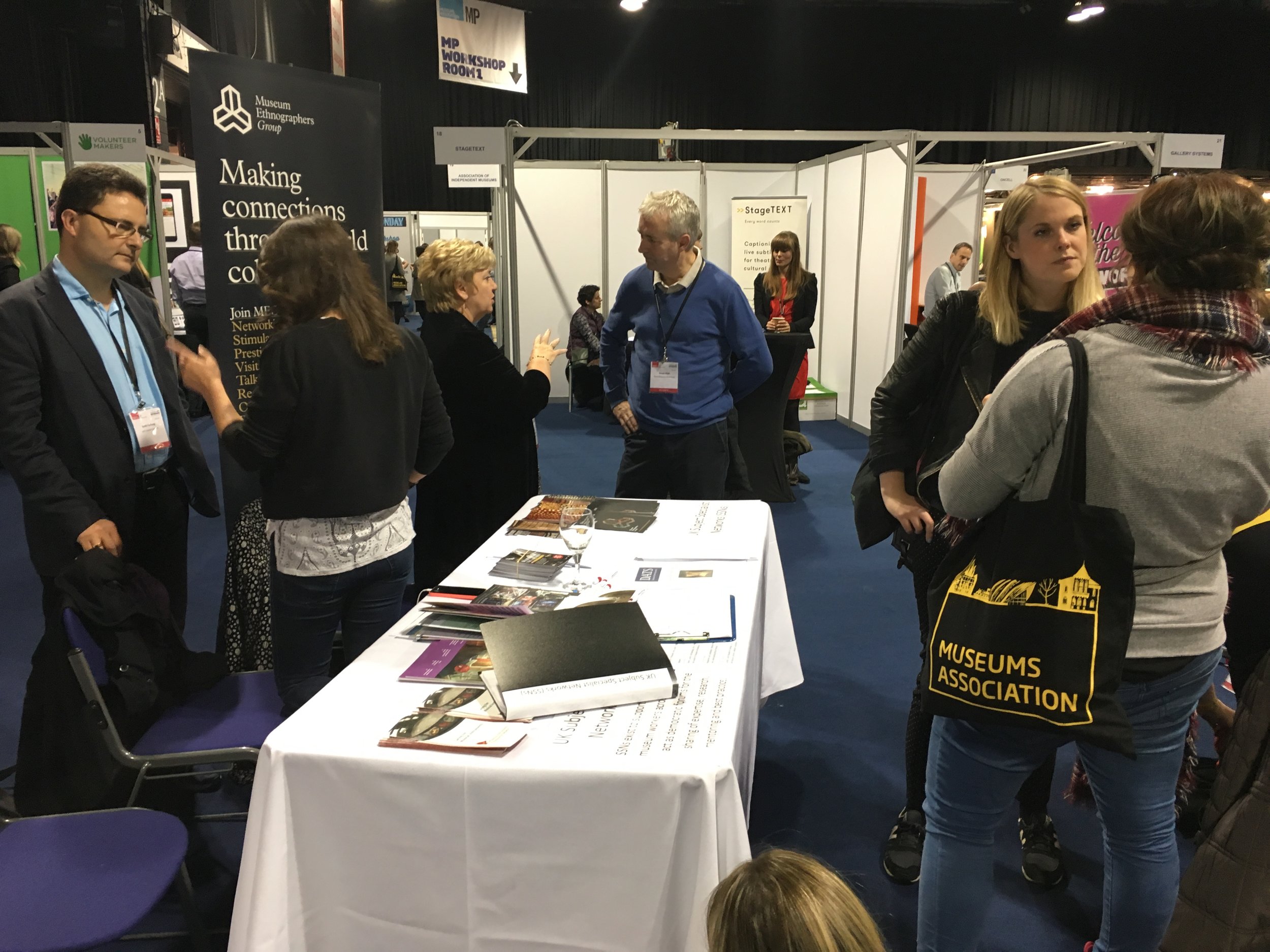SSNs at the Museums Association Conference
/At this year’s Museums Association Conference, members of a wide range of Subject Specialist Networks worked together to hold a stall in the Networks Hub area of the exhibition hall. It was the first time that the Subject Specialist Networks had had a collaborative presence at the conference and was an opportunity for the different networks to meet and discuss their work, and give information to museum professionals about the different groups that exist.
The stall, co-ordinated by the European Paintings pre-1900 SSN, was supported and manned by staff from a wide range of networks, including: the Museum Ethnographers Group; Dress and Textiles Specialists; Islamic Art and Material Culture SSN; Musical Instruments Resource Network; and Understanding British Portraits.
SSN groups who were not able to be at the conference were represented nevertheless: many of the groups sent information which was presented in a fact file for visiting delegates to peruse. In this way we hoped to disseminate as much information as possible about the Subject Specialist Networks, and reach out to curators and museum professionals for whom these networks could be relevant or useful.
There was also an opportunity to explore in more depth issues facing the future of SSNs in the panel discussion held at the conference on Tuesday 8 November.
The discussion was chaired by John Orna-Ornstein, Director of Museums and Cambridge for Arts Council England. The session began with introductions from each of the panel members, about the work and remit of their networks and the future role of these groups within the sector.
Gail Boyle, Chair of the Society for Museum Archaeology, explained how their SSN works collaboratively with a range of institutions, some of which are archaeological and some not. Recent projects that the SSN has supported include a government survey about the storage of artefacts in local authority buildings; and a project to collect data about collections and expertise that exists around the UK.
Paolo Viscardi, Chair of the Natural Sciences Collections Association, a network which is now 40 years old, also discussed the loss of expertise in the museums and galleries sector, and how this affects our ability to make the most of collections. He argued that SSNs are increasingly important in supporting and sharing knowledge with institutions which are now staffed by collections managers rather than specialist curators. Paolo also spoke about the role of digital technology in the future of SSNs, and is developing a wiki which can store information about caring for and using collections which specialists around the country can access.
Caroline Pegum, Co-ordinator of the Understanding British Portraits SSN, gave an introduction to their network, which provides training and skills sharing. She displayed some of the resources available on their website, including toolkits, podcasts, and films of their events; as well as giving information about their fellowship programme.
John Orna-Ornstein then began the discussion, asking what is working well, what needs to change, and raising issues of funding, both relating to the Arts Council and other funding streams. Funding was one of the key factors that varied between the SSNs – some are supported by organisations such as the Arts Council; others charge fees to their membership; and others are dependent on support from volunteers. Some members of the panel felt that the minimum funding requirement from the Arts Council was too large, and may not be feasible for some networks in terms of the administrative burden and management of projects and spending.
Questions from the audience raised issues such as: how can SSNs support collections at risk; the importance of working with local museum development groups; and recording information from SSN projects which can be used in the future.
The future of SSNs was also explored, with the panel arguing the importance of being responsive to the needs of members; that SSNs should be sustainable so they can offer more support; that they should be more inclusive; and that barriers between different SSNs should be broken down.
The conference was a great opportunity to work together with other SSNs and to meet in person to discuss what makes us similar and different; and to explore ways in which collaborations between networks can make us stronger and more creative in the future.








